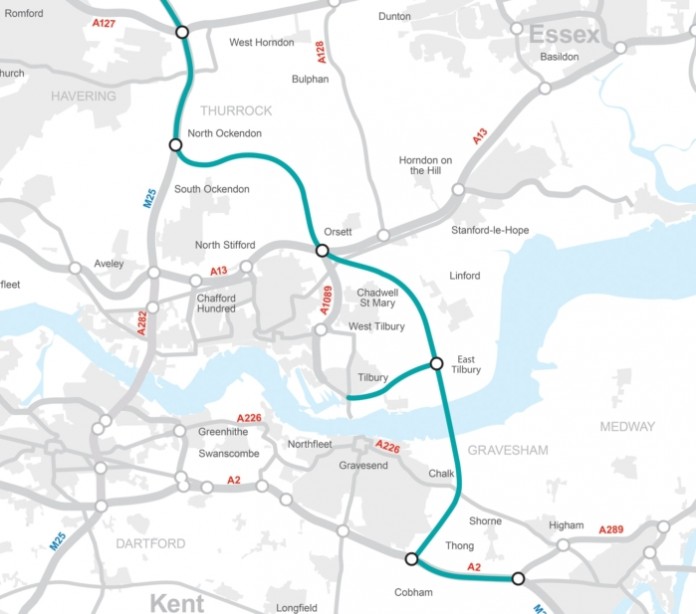The latest design update on plans for a new Lower Thames Crossing between Essex and Kent – which will be the largest road scheme in the UK – have been praised by the South East Local Enterprise Partnership (SELEP).
The update highlights the work that has been undertaken by Highways England since the Rt Hon Chris Grayling, Secretary of State for Transport, announced the preferred route for the crossing in April.
In Kent, Highways England is now proposing that the route between the A2 and A13 in Essex is three lanes in both directions, which will involve widening the A2 to junction 1 of the M2 to improve traffic flows.
The proposed junction with the A226 has also been removed following feedback from residents and businesses that it would increase local traffic in the area.
A new junction and link road at Tilbury is included following widespread support for the investment aiming to boost the local and regional economy by improving the connections to the Port of Tilbury and Kent.
In Essex, a new design for the proposed junction with the M25 between junctions 29 and 30 is now being progressed. It aims to provide a safer junction with greater capacity that also blends better with the local landscape.
The junction of the A13 has also been redesigned to improve traffic flows and the junction with the A128 has been removed. Concerns from the local community about the effects of a junction at Orsett Cock on local roads and traffic levels has led to changes to the link to the A13.
A new junction and link road at Tilbury is included following widespread support for the investment in order to boost the local and regional economy by improving the connections to the Port of Tilbury. Highways England believes the junction changes proposed for Tilbury will reduce HGV traffic on local roads.
Highways England is also proposing that the route between the A13 in Essex and A2 in Kent is three lanes in both directions and through the tunnels. This will involve widening the A2 to junction 1 of the M2 near Shorne to improve traffic flows.
Christian Brodie, Chairman of SELEP, said: “It is clear Highways England has listened to businesses and local communities.
“We recognise there are those on both sides of the Thames that will be affected, but believe Highways England is doing all it can to mitigate the impact. The new crossing will have a positive impact on the economy of the SELEP area, and the UK as a whole.
“It is much more than just a tunnel with a road at either end. We welcome the focus of Highways England on ensuring it connects well with the wider road network in Kent and Essex.”
Jo James, Chief Executive of Kent Invicta Chamber of Commerce, said: “The proposal to make each tunnel three lanes wide, and at the same time reduce the impact of HGVs on local communities, is great news.
“This update will strengthen the confidence of the business community that the project team is moving through the design stage and towards getting diggers on site as quickly as possible.”
Charles Hammond, Chief Executive of Forth Ports (owner of the Port of Tilbury), welcomed the improvements to the scheme, including the development of a junction east of London’s major port into the expanding operational area reflecting the consultation feedback, said: “We are pleased the junction at Tilbury is now integral to the largest road scheme in the UK.
“It is vital that Thurrock benefits from a nationally significant infrastructure project like this. We will continue to work with the Government, Highways England and Thurrock Council to ensure this is the case.”
As part of a £1bn investment programme, the Port of Tilbury is undergoing two major extensions to the port estate: the 70 acre London Distribution Park and the proposed 152 acre new port terminal, Tilbury2.






















